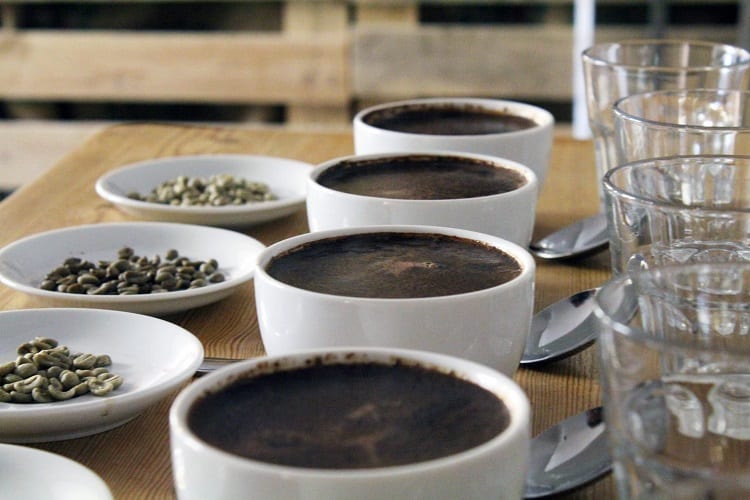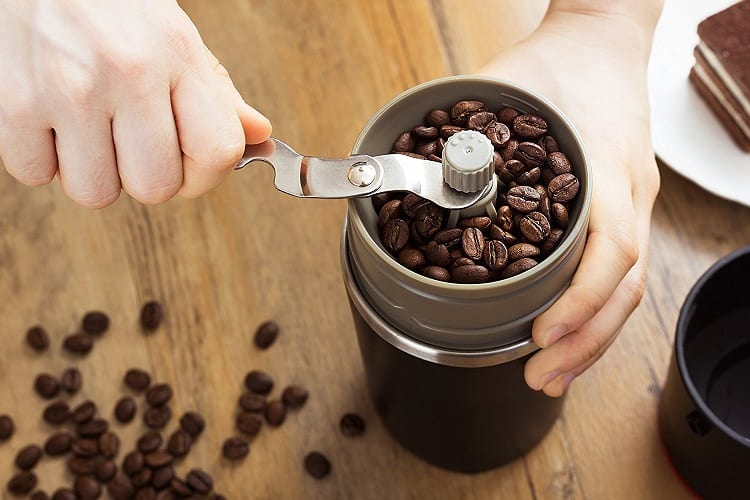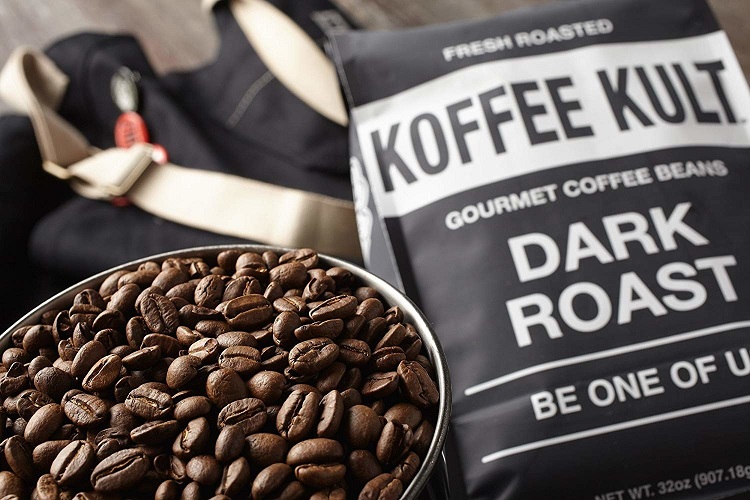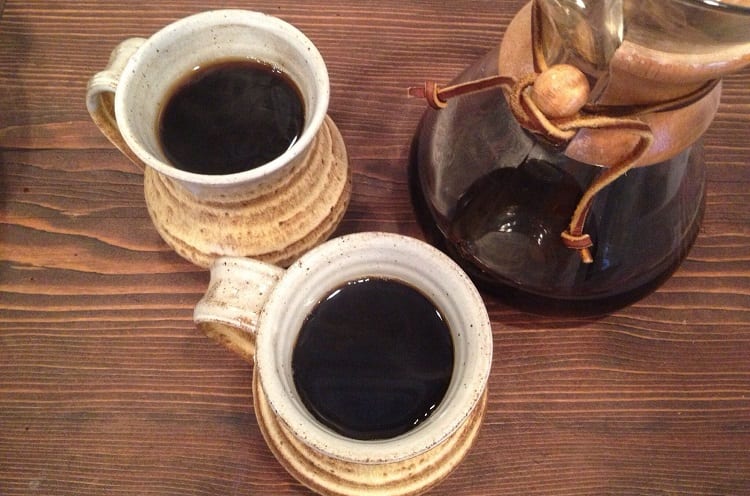Sick of the cheap gas station-flavored garbage that they sell on supermarket shelves?
Not everything you come across is going to be good. Coffee is, after all, a multibillion-dollar industry with so many brands, it’s hard to lose track.
You’ve got the thirst for gourmet coffee—rich, smooth, delightful, and higher quality than what you’re drinking now—and we’ve got a thing or two to tell you about it.
If you really want to experience true blue gourmet coffee, this is what you need to know.
What is Considered Gourmet Coffee?
We hear gourmet as a buzzword to imply higher-quality, unique foods that are just a cut above their common varieties.
Gourmet has some exclusivity to it and always means a better taste, regardless of what you’re talking about. When it comes to coffee, it’s considered gourmet if it’s 100% sourced from the same type of coffee.
If you purchase 100% Arabica bean coffee, that’s technically gourmet. When you get a blended coffee that’s sourced from different types of beans, say 80% arabica and 20% robusta beans, it’s just titled as a blend.
You might have seen breakfast blend or house blend as terms used on coffee packages or in your local coffee shop.
The word gourmet gets people excited, so it’s something that less-than-ethical marketers will overuse on packaging to sell coffee. I’m telling you this because it can take a keen eye to see if coffee is truly gourmet or not.
Unique and gourmet are also not the same thing. In recent years, people have been paying top dollar for Kona coffee beans, which are strictly sourced from Hawaii.
That’s exclusive, and it’s an award-winning type of coffee, but unless it’s 100% Kona coffee, it’s not considered gourmet.
What Is The Difference Between Gourmet Coffee And Regular Coffee?

Blending. You can technically have horrible-tasting gourmet coffee so long as it’s 100% strictly that one type of coffee, and not blended at all.
A blend of different roasts, coffee bean sources, and flavors all make a Frankenstein bag of beans that have flavor profiles all over the place.
Gourmet coffee locks in on one single flavor profile found in the specific type of bean that it’s sourced from.
When you think about how much of one ingredient it takes to make one set amount of a finished product and you commit to nothing else except that one ingredient, that’s gourmet.
How Is Gourmet Coffee Made?

You have no control over how the beans are made and distributed, but you can have a massive impact on your end result based on how you choose to make your coffee.
The truth is, most people don’t know how to make good coffee from home. Most people just flip a switch after dropping in water, a filter, and some grounds and call it a day.
That’s not coffee. Brewing gourmet beans in this manner is like slapping coffee bean farmers in the face, because it’s tarnishing the final product.
Coffee should never exceed 200°F, and it should never be brewed beneath 190° F, or you should underextract the beans. Do you even know what temperature your drip-style coffee pot is brewing at?
This is how you make gourmet coffee the right way.
To start, you need one of the following types of brewing methods to get the perfect taste out of your coffee: siphon, pour over, French press, Vietnamese filter, drip cone, percolator.
Step 1
Start with your water. If you don’t already have a thermometer capable of detecting water temperature, it’s time to get one. You want to have the perfect temperature when you make that cup of gourmet coffee.
Step 2
Heat your water up to 200°F flat. I say that knowing the difficulty of maintaining this heat.
Even major coffee chains have temperature ranges, though they are fairly narrow. Shoot for between 196°F and 200°F if you can. Anywhere in that range will make a delicious cup of coffee.
Step 3
While the water is heating up, it’s time to grind your coffee.
Super fine grinds are used in espresso, while overly coarse grinds are used in stove-top coffee (commonly referred to as “cowboy coffee”), and right in the middle, you have medium coarse grinds.
These are used in French presses and Vietnamese filters more than anything else. It’s recommended to go for a medium coarseness for gourmet coffee.
Step 4
No matter what type of coffeemaker you’re using, it’s time to prepare where your grinds will go. If it’s a French press, drop them in.
If it’s a pour-over coffee maker, get that cone-shaped filter ready. Now it’s time to add your water.
Step 5
Make the exact amount that you and your guests will be enjoying in the next twenty minutes. Coffee goes stale very quickly.
Because of the highly acidic nature of freshly ground coffee beans and the fact that you’re increasing the surface area (the area of one bean’s surface versus the area of 1,000’s of tiny granule’s surface), you basically set your coffee grounds up for rapid oxidation and staleness.
Step 6
Any leftover coffee after the twenty minutes can be turned into iced coffee, since any bitterness will be cut with a bit of water.
What Are Some Good Gourmet Coffee Brands?

If you’re still trying to find a few good brands that are known to supply gourmet coffee, this quick little roundup will tell you the best brands that we’ve personally fallen in love with over the years.
Climb’s Roast Gourmet Colombian Coffee
Normally I would say that there’s no way Colombian coffee can taste premium and gourmet for my western palate, but there’s just something wholesome and earthy about the smell that you get when you crack open this bag of beans.
Koffee Kult
Dark roast is a tough roast to nail down, but it’s even more difficult to make it work when you’re sourcing it from gourmet beans. Koffee Kult is one of the only primarily dark roast coffee brands out there that I would say lives up to its gourmet name. At less than a dollar an ounce, it works out to be affordable as well.
Lavazza
This is a brand that’s been around since the late 1800s, and they’re still making coffee today. Their Super Crema espresso roast blend of coffee is basically like having heaven in a cup, so if you’re looking for a bit of extra jolt in the morning.
Bulletproof
When you drink something that’s called “Bulletproof,” it makes you feel like James Bond. For real, Bulletproof coffee has the perfect gourmet medium roast to emulate the sweeter side of coffee that you already love, but without being too harsh.
Death Wish
Do you like coffee, or do you love coffee? This company takes gourmet coffee to the next level by also ensuring that it’s completely organic. This gives you a nice boost to your day, grinds smoothly, and has an aroma unlike anything else.
Hazz Coffee
Kona coffee is a cut above the rest and a step outside the norm, and it’s something that you can get used to. Thankfully, Hazz Coffee makes an inexpensive, high-end gourmet Hawaiian coffee that has a one-up on Arabica. It’s time to spoil yourself.
Cooper’s Coffee Company
They make a mean light roast, single-origin sourced from Ethiopia, and about as high-end as it gets. They’re a bit pricey per pound, but it’s a glorious taste, straight from the country where coffee originated over a thousand years ago.
White Monkey
Big bags of bulk beans from this one-of-a-kind brand smell like they’re fresh off the tarps at coffee farms, fresh from sun drying. If I had to use one word to describe this gourmet coffee brand, it would be decadent.
How do You Make Homemade Gourmet Coffee?

Start with gourmet beans, all 100% sourced from the same coffee bean plant and geographical location. Only buy the beans and grind them yourselves.
I believe by this point I’ve beaten that point into the ground, but in terms of preparation, there are two more tips I can offer to you to help you change the game.
These are often oversights because nobody has a full-service, ServSafe-trained barista in their kitchen to make everything for them.
These two tips and scraps of knowledge are going to make a major impact on your overall flavor and smoothness of your coffee.
Only use filtered water. Whatever your city water is doing isn’t enough; you’re going to need to get your own filtration system. I recommend getting a ZeroWater Zp-010 water filter pitcher.
This includes a water quality meter so you can inspect the water without having to use individual test strips, which takes some of the annoyance out of preparing your water.
Always, always use filtered water to get the most out of gourmet coffee.
Clean your coffee pot. That sounds like a joke, but I’m being completely serious. I had a friend who was a cleaner, and he would clean ovens, microwaves, and toasters… and then he got to the coffee pots.
People would leave grinds in all day, and the condensation from the water tank would gather (and build bacteria) all along the interior area of the tank lid.
All of that grossness sits in the water tube, and you’ll notice that when you look at the spray head in your drip-style coffee maker, it’s something out of a health inspector’s nightmare.
Wipe the spray head. Use a wet paper towel to clean out the inside of the water tank. Run white distilled vinegar through your entire coffeemaker twice, then run water through it.
Last but not least, put your coffee pot under a lamp so you can see the thin layers of grime that have built up on it. Coffee is very oily, and that sticks everywhere.
If twenty minutes of fresh coffee sitting in the open air makes it spoil, what do you think the last four hours of wet coffee on a sprayhead do to the flavor and quality of your next batch?
Gourmet Coffee At Its Finest
Is gourmet coffee more expensive than standard coffee?
Yes. Is it worth it? That’s not even a question.
You can do a lot better every single morning with the tantalizing taste of a quality brew on the back of your throat. It’s time to upgrade your mornings (and that late afternoon iced coffee, too).